Daily Photos from February 4, 2018
Greenhab Report – February 4nd
Crew 188 Sol 7 Green Hab Report 04FEB2018
Sarah Jane Pell (Artist in Residence), Guest writing for Julia De Marines (Crew Astronomer/GreenHab Officer)
04 February 2018
Environmental control: Heating
Ambient with door opening: Shade cloth on
Working hours in Green Hab: 11:00 – 11:30, 18:00 – 19:00
Outside temp at working hour: 16ºC
Inside temp at working hour: 25ºC
Inside temp H: 32ºC
Inside temp L: 14ºC
Inside humidity: 37 %
Inside humidity H: 82%
Inside humidity L: 19%
Hours of supplemental light: 06:00 – 9:59
Changes to the crops: A crop of lettuce and herbs was taken for lunch. [We made a healing elixir
and tincture in oil to heal our ravenous hunger and aching bodies.]
Daily water usage for crops: 48 litres
Time(s) of watering plants: 11:00 – 11:30 (16 litres), 18:00 – 19:00 (32 litres)
Changes to research plants: Still monitoring the quinoa for sprouting.
Narrative: Zac Trolley, Engineer dressed in his flight suit to tend to the crops, while I filmed the entire GreenHab scene in 360 6K full 3D. I am now working on audio samples from the plants, to prepare an accompanying score for the first in our suite of immersive VR experiences.
Future needs and questions: We are awaiting the arrival of the tomato cages so we can replant the tall plants that require support to grow to their full potential. Please advise when they will arrive.
Dr. Sarah Jane Pell
TED Fellow 2010, Australia Council Fellow 2016, Gifted Citizen 2016
The ‘Performing Astronautics: following the Body’s Natural Edge into the Abyss of Space’ project is assisted by the Australian Government through the Australia Council, its arts funding and advisory body http://www.artistastronaut.com
Artist, Occupational Diver, Keynote Speaker, Researcher, Simulation Astronaut http://www.sarahjanepell.com
Journalist Report – February 4th
MDRS Crew 188 Journalist Report 04FEB2018
Crew 188 Science’s the Shit Out of MDRS
SOL-7 Author’s name: Julia DeMarines
The theme for this report is Science. It is the third report in a short series responding to the MDRS “Safety, Simulation, and Science” priority of operations.
BACKGROUND:
In the wise words of Mark Watney in The Martian, “in the face of overwhelming odds, I’m left with only one option. I’m going to science the shit out of this,” and that’s exactly what crew 188 plans to do during our residence at the Mars Desert Research Station. Collectively, we have brought over $30,000 worth of research equipment in hopes to advance scientific knowledge. MDRS provides a unique space in which scientific research can be conducted as if a crew of explorers were carrying out experiments on Mars. Crew 188 offers a diversity of backgrounds and expertise that, collectively, would support groundbreaking discoveries, and innovations, if we were truly on Mars, and aim to tackle the big questions.
These big questions we will be tackling include: how a crew will maintain the health and performance of astronauts living and working in isolated conditions such as on Mars and overcome difficulties; what an optimum extra vehicular activity (EVA) suit and glove design would be for ensuring protection and functionality for its user in extreme conditions; mitigation of dust contamination from EVA’s; optimum crop production with minimal resources in reduced gravity situations; experimental and immersive astronautical performance following a journey that transcends through Earth’s atmosphere and beyond; a 360º camera will capture performance astronautics to give observers a complete and immersive perspective of living on Mars; collection of micrometeorites to add to a worldwide database aiming to yield clues to the solar system’s formation; and last but not least, using in situ chlorophyll detectors to detect signs of life as if on a Mars rover. For a more information please find a more detailed description of our research plans below, and in the meantime, stay tuned for scientific updates!
SCIENCE: Summary of Research Experiments
1. Increasing Spaceflight Analogue Mission Fidelity by Standardization of Extravehicular Activity Metrics Tracking and Analysis Spaceflight analogues include human simulations that attempt to match as many variables of a real mission as possible, but here on Earth and at a fraction of the cost. Each analogue has unique environmental and human performance testing conditions, but they all have limitations. The goal of this Embry-Riddle Aeronautical University (ERAU) Spacesuit Utilization of Innovative Technology Laboratory (S.U.I.T. Lab) research is to improve simulation fidelity through Extravehicular Activity (EVA) data collection, analysis, and feedback, which will help humanity prepare for destinations such as the Moon or Mars. The investigation of human performance data with respect to workload expenditure will help identify energy limitations, thus training explorers to maximize their potential.
2. Remote Video Capture Analysis of Spacesuits for Spaceflight Analogue Expeditions The Embry-Riddle Aeronautical University (ERAU) Spacesuit Utilization of Innovative Technology Laboratory (S.U.I.T. Lab) is designing protocols for the recording of analytical videos for analogue spacesuit performance. This approach derives how to communicate effective instructions to a remote crew, and then analyze simulated spacesuit performance. The protocol development has future applications for distant diagnosis of spacesuits, for example a crew on Mars may need expert technicians on Earth to troubleshoot range of motion (ROM) limitations. Key results and recommendations will be presented in this paper aiming to help advance analogue expeditions and missions to the Moon and Mars.
3. Dust Abrasion and Operations Investigation of Thermal Micrometeoroid Garment (TMG) Gloves Dust on planetary bodies in a known problem for equipment and astronaut health, as the extreme abrasiveness can cut through the layers of a spacesuit. Dust particles present health risks to astronauts and exposure must be mitigated before sending crews to Mars and beyond. One of the most intricate parts of a spacesuit is the glove. The gloves must have an extremely high range of dexterity to enable astronauts to complete their tasks correctly and efficiently. Wear and tear on the gloves will be recorded and analyzed after the completion of the MDRS analogue mission.
4. Martian Dust Filter Tests As humans venture further into space more issues correlated to space travel are being discovered. While the perils of dust particles may not be widely recognized, it is one of the major issues astronauts will face on the surface of the Moon and Mars. Dust particles present a problem for both astronaut health and equipment. Dust particles cling to spacesuits, which upon ingress would begin circulating throughout the spacecraft or habitat. An astronaut’s health is compromised by the dust particle’s potential to stick to the lungs and cause respiratory illnesses. Data collected from this research will further facilitate the mitigation of astronaut’s exposure to dust particles on the surface of celestial bodies.
5. In-situ testing of VEGGIE prototype plant growth hardware: Orbital Aquifer System for VEGGIE (OASYS) We will bring a GreenHab experiment to test a new prototype vegetation system, invented by NASA KSC scientists, for watering plants in reduced gravity environments. Salad bar style lettuce is an ideal vegetable for this demonstration as it is quick to grow and easy to germinate from seeds. The purpose of this research project is to further test candidate crops that need to be performed through an analog study prior to being grown aboard ISS.
6. Performing Astronautics Dr. Sarah Jane Pell’s MDRS research forms part of an Australia Council Fellowship project titled Performing Astronautics. Performing Astronautics explores the bodily practice of navigation beyond Earth’s atmosphere as an Experimental and Emerging Art. Explored in parallel phases combining: 1) instrumental/speculative and 2) operational/performative experimentation and exploration through participation in space analogue training and human spaceflight mission simulations.
7. Bending Horizons 360
“Bending Horizons 360” is supported by Monash Immersive Visualisation Platform [MIVP] with the provision of the Insta360 Pro Camera. The aim is two-fold: firstly to support collaborations with fellow crew researching EVA spacesuit validation [in partnership with
Final Frontier Design FFD], environmental interactions, science and engineering engagement, human factors and performance research. Secondly, to produce speculative fiction short films, new 3D artifacts and novel expressions of video data to capture the range of human-environmental interactions on the Mars Analogue environment supporting a future collaborative partnership between Dr. Sarah Jane Pell and A/Prof David Barnes.
8. Potential Human Activities to Improve Quality of Life on Mars This research project is looking for how the quality of life can improve during Mars simulation as a case study. Currently quantitative data shows that the human activity should be regulated. However, because of long-time requirement for Mars habitat mission, identifying how astronauts’ quality of life can improve during Mars mission need to develop is very important to maintain mission efficiency and space activity as well. This research project is primary looking for what available human activity can improve the quality of life during Mars habitat mission in the future.
9. Project Stardust This collaborative meteorological investigation of micrometeorite samples collected from field sites all over the world now includes samples taken from MDRS. These types of analyses on Earth help us understand how the solar system was formed as we venture out to explore it.
10. In-situ Chlorophyll Detection “Are we alone?” is a fundamental human question that is shared by humanity. The answer may be right around the corner or perhaps never come but we will never get closer to that answer if we don’t search for life. Researchers from NASA and Robotics Everywhere LLC (www.f3.to) have collaborated on a handheld Chlorophyll detector that can be operated in the field, indoors, and hopefully, underneath a rover using Chl-florescence.
11. Mars-to-Mars Hangout: Connecting Mars Basecamps Across the Red Planet The Mars Desert Research Station (MDRS) in Utah, will gain communication and opportunity benefits during its two-week mission period by live video connecting with the AMADEE-18 analogue simulation simultaneously running a Mars research mission, located in Dhofar Region, Oman.
Sol Summary Report – February 4th
Crew 188 Sol 7 Summary Report 4FEB2018
Sol 7
Summary Title: Turning Point
Author’s name: Ryan L. Kobrick, Ph.D., MDRS Crew 188 Commander
Mission Status: Crew is well.
Sol Activity Summary:
Today’s highlights included a pedestrian EVA back to Hab Ridge for micrometeorite and chlorophyll sample collection and scenic views with Tat, Julia, and Renee. The crew enjoyed performing the bubbles experiment a few times including by the science dome for a short video recording. During the morning, Sarah Jane and Zac helped with the spacesuit mobility study that I am conducting with my ERAU S.U.I.T. Lab (see @SpacesuitUp) at several analogue station locations around the world. SJ worked as the technician and Zac the suited/unsuited test subject.
Afterwards the crew had a big lunch followed by round 2 of Tat’s human factors study. It was a very enlightening conversation that identified how we could all help each other with our scientific goals during the mission. There are a lot of projects underway being managed in a delicate balance and a short time budget. Many of the projects already have publication plans lined up at peer reviewed conferences or with partnerships at universities and museums for exhibits. We owe it to our partner PIs around the world to extract the best possible data possible while roaming the red desert.
In the early evening, our #SuperScienceSunday blitz did not go as planned to help reach the public with our messages about exploration and education. Not all plans happen as intended, but flexibility and perseverance will keep our team bonded to face challenges to share something bigger, something that cannot be explained in abundant daily reports and occasional snaps on social media. Our crew wound down with a group meditation session in the science dome, followed by open and very personal discussion, and was crowned with a yoga session to stretch our legs for the next EVA and the next challenge.
Spacesuit Up!
Ryan L. Kobrick, Ph.D.
MDRS Crew 188 Commander
Look Ahead Plan:
Tomorrow EVA 9 will take the crew to a site first explored by Crew 187 in the south regions of our exploration zone. Crew members will work on various projects at the Hab. The following day is likely to be followed by two EVAs so that we can meet our exploration and scientific objectives. Make sure to check out updates on Facebook: https://www.facebook.com/TeamISUonMars and Twitter: https://twitter.com/ISUonMars.
Anomalies in work:
None.
Weather:
Windy, but not like the high winds of yesterday. Skies were mostly clear.
Crew Physical Status:
The crew is well, but is enjoying a bit of personal space as well.
EVA:
One is planned for tomorrow.
Reports to file:
1. EVA #9 request
2. EVA #8 Report
3. Ops Report
4. Sol Summary
5. Journalist Report
6. Green Hab Report
7. Daily Photos
Support Requested (acknowledged yesterday but listed as reminders):
Heater for science dome requested.
There are potentially two packages at Hollow Mountain that we would love to have picked up.
Water tank refills will be needed in the next few days.
EVA Report – February 4th
Crew 188 EVA #8 Summary Report 4FEB2018
Author’s name: Tatsunari Tomiyama AHFP, Health & Safety Officer
Purpose of EVA: Collecting soil samples for the micrometeorite investigation and for chlorophyll sample collection on the Hab Ridge Road and Hab View.
Location of EVA: Hab Ridge
UDM27 Coordinates: 5175750E 54250500N
Number of EVA Crew: 3
Participants: Tatsunari Tomiyama, Julia DeMarines, Renee Garifi
EVA Commander: Tatsunari Tomiyama
Rovers used: None
Duration: 2 hours 22minutes
EVA Departure Time: 10:21am
EVA Return Time: 12:43pm
Summary:
For this EVA, we followed the same foot pathway used on EVA#7. We tried to get to the same locations to collect samples for our micrometeorite investigation and for chlorophyll sampling. The EVA request originally stated we would take 4 hours. However, we planned in the briefing to shorten the length because the path was previously walked. The EVA was successfully completed and we collected samples during this EVA.
The EVA started at 10:21. The weather outside the Hab was nice and windy in this morning. There was no major issue climbing to the Hab Ridge Road. One crew member reported a minor headache at the top and rested for a while because the condition was due to the exercise. After contacting to the HabCOM around the north Hab view, we decided to stay 1 hour to collect samples for research which was a shorter time then we planned in our request. We performed the bubble experiment at both Hab view locations (south and north). On the way back to the Hab, we collected some trash nearby the Hab. Overall, we succeeded in our planned objectives.
Operations Report – February 4th
Crew 188 Operational Report 04/02/2018
Sol 7
Zac Trolley
Non-Nominal Systems: electrical system, electrical cords
Notes on non-nominal systems: See individual systems at the end of the report.
Generator (hours run): 16.9h
Solar: SOC 80%
Diesel: 75%
Propane: 61 psi
Ethanol Free Gasoline (5 Gallon containers for ATV): 8 Gallons
Water (trailer): 0 Gallons
Water (static): 170 Gallons
Trailer to Static Pump used: No
Water (loft) – Static to Loft Pump used: Yes
Meter 130739.8
Toilet tank emptied: No
ATVs Used: None
Oil Added: None
ATV Fuel Used: None
# Hours the ATVs were Used today: 0
Notes on ATVs: none
Deimos rover used: No
Hours: Hours: 108.1
Beginning charge: N/A
Ending charge: N/A
Currently charging: Yes
Sojourner rover used: ASSIGNED TO DIRECTOR
Hours:
Beginning charge:
Ending charge:
Currently charging:
Spirit rover used: No
Hours: 18.0h
Beginning charge: N/A
Ending charge: N/A
Currently charging: No
Opportunity rover used: No
Hours: 13.5
Beginning charge: N/A
Ending charge: N/A
Currently charging: No
Curiosity rover used: No
Hours: 11.3h
Beginning charge: N/A
Ending charge: N/A
Currently charging: No
HabCar: Not used
General notes and comments: We are rotating the Rovers with the one plug in we have, and that should be sufficient if we are taking 2 rovers at a time per EVA.
It would seem that the electrical generation isn’t being regulated that well. The diesel and solar power systems will vary between 120V and 140V. No known reason why this is happening.
During an EVA, a plastic handle from the passenger side roll cage on Demos came off. We have the handle, but no hardware to re-attach it.
Generator was turned off at 10:36
Generator was turned on at 17:28
I’ve found two extension cords that have been damaged and need to be replaced. If there are 3 prong plugs available, I can repair the cords. Please advise.
Summary of internet: Internet connectivity continues to be a problem even with the data purchased. Devices are having troubles connecting and this is limiting the crew’s ability to monitor the CapCom emails
Summary of suits and radios: The clasp on Suit 1 was bent back to place, it’s as good as new.
Suit 2 was repaired, it was a cold solder joint, as well as the connection not being crimped. I expertly re-attached the connector and the suit is operational
Summary of Hab operations: Nominal
Summary of EVA operations: In the warm weather the fogging issue isn’t as pronounced. We are hoping for warm weather to maintain visual accuracy in the helmets.
Summary of GreenHab operations: The temperature gauge display has some non-functional LCD areas, a new one has been ordered.
Summary of Science Dome operations: The science dome is awaiting a portable heater as per the MDRS Director.
Summary of RAM operations: Not Operational.
Summary of health and safety issues: Nominal
Questions, concerns and requests to Mission Support: We could use another bag of toilet deodorizer, as we only have one pack left.
Operations Report – February 3rd
Sol 6
Prepared by: Zac Trolley
Non-Nominal Systems: Greenhab temperature sensor, Suit 2, electrical systems.
Notes on non-nominal systems: See individual systems at the end of the report.
Generator (hours run): 16.7h
Solar: SOC 84%
Diesel: 76%
Propane: 61 psi
Ethanol Free Gasoline (5 Gallon containers for ATV): 8 Gallons
Water (trailer): 0 Gallons
Water (static): 200 Gallons
Trailer to Static Pump used: No
Water (loft) – Static to Loft Pump used: Yes
Meter 130708.6
Toilet tank emptied: Yes
ATVs Used: None
Oil Added: None
ATV Fuel Used: None
# Hours the ATVs were Used today: 0
Notes on ATVs: none
Deimos rover used: Yes
Hours: Hours: 108.1
Beginning charge: 100%
Ending charge: 98%
Currently charging: No
Sojourner rover used: ASSIGNED TO DIRECTOR
Hours:
Beginning charge:
Ending charge:
Currently charging:
Spirit rover used: No
Hours: 18.0h
Beginning charge: 100%
Ending charge: 91%
Currently charging: No
Opportunity rover used: no
Hours: 13.5
Beginning charge: N/A
Ending charge: N/A
Currently charging: No
Curiosity rover used: Yes
Hours: 11.3h
Beginning charge: 100%
Ending charge: 92%
Currently charging: Yes
HabCar: Not used
General notes and comments: We are rotating the Rovers with the one plugin we have, and that should be sufficient if we are taking 2 rovers at a time per EVA.
It would seem that the electrical generation isn’t being regulated that well. The diesel and solar power systems will vary between 120V and 140V. No known reason why this is happening.
During an EVA, a plastic handle from the passenger side roll cage on Demos came off. We have the handle, but no hardware to re-attach it.
Summary of internet: Internet connectivity continues to be a problem even with the data purchased. Devices are having troubles connecting and this is limiting the crew’s ability to monitor the CapCom emails
Summary of suits and radios: There is a bent clasp on suit #1 on the helmet collar. It was probably bent during the EVA, the system is still functional.
Suit 2’s air supply is no longer functioning. The diagnostics we performed suggest that the switch isn’t operating properly. We are shelving the EVA suit.
Summary of Hab operations: Nominal
Summary of EVA operations: We are still brainstorming ways to combat the helmet fog. Without proper ventilation under the helmet ring, the facemasks rapidly fog up. It is becoming a safety issue on EVA. The other suit configuration seems to have better airflow.
Summary of GreenHab operations: The temperature gauge display has some non-functional LCD areas, a new one has been ordered.
Summary of Science Dome operations: The science dome is awaiting a portable heater as per the MDRS Director.
Summary of RAM operations: Not Operational.
Summary of health and safety issues: Nominal
Questions, concerns and requests to Mission Support: Nominal
Crew Photos – February 3rd
Greenhab Report – February 3rd
Prepared by: Julia DeMarines
03/02/2018
Environmental control: Heating
Ambient with door opening: Shade cloth on
Working hours in Green Hab: 13:00 – 15:00, 19:00 – 20:00
Outside temp at working hour: -1ºC
Inside temp at working hour: 15ºC,
Inside temp H: 31ºC,
Inside temp L: 15ºC,
Inside humidity: 47 %
Inside humidity H: 47%
Inside humidity L: 16%
Hours of supplemental light: 06:00 – 09:59
Changes to the crops: N/A
Daily water usage for crops: 2 gallons midday; 10 gallons evening
Time(s) of watering plants: 13:00 – 15:00 (2 gallons), 19:00 – 20:00 (10 gallons)
Changes to research plants: N/A
Narrative: Both Julia and Zac were on EVA’s today at separate times and both spent time watering the plants, staggered. Upon persistent trials and errors, we have both noticed that the wilted plants are most likely due to requiring a midday watering, being dry from having the door open, and being in the southwestern-most corner (and getting very hot).
We will keep monitoring and testing out better methods to keep the temperature not too hot and not too cold. Today was a very windy day.
Future needs and questions: We need tomato cages before repotting as to not disturb them any more than necessary.
Summary of NASA VEGGIE OASYS: Renee added water to the wicks and the reservoir and took photos of germinating seeds for the PI.
[end]
Journalist Report – February 3rd
Simulation: Imitation of a situation or process for research and training
SOL-6 Author’s name: Dr. Sarah Jane Pell
The theme of this report is Simulation. It is the second report in a short series responding to the MDRS “Safety, Simulation, and Science” priority of operations.
BACKGROUND:
First and foremost, the MDRS analogue attempts to curate a research station model supporting the professional relationship and activities of early settlers.
The simulation, by its nature, combines real working facilities on Earth Mars-like terrain, with instruments and systems for the imitation of a Mars-like situation and various associated process for research and training. There are collective and individual jobs to get done in developing and maintaining the station. Crews define an assigned role and a job position for each member with a myriad of tasks to perform, and conditions to explore.
Ultimately, the MDRS simulation offers an experience for contributing to a body of situational or process-based knowledge unraveling the intricate inner working of establishing a human foothold on Mars.
The simulation evokes many responses. There are moments when we feel like visitors, tourists, customers, test-subjects, staff, scouts, students, researchers, settlers, crewmembers, trainees, simulants and occasionally, frontier explorers.
SIMULATION:
Today, two teams of three Analogue Astronauts simulated “spacewalks” or extravehicular activities [EVAs] across the MDRS Mars-analogue terrain. We designated EVA-7 as an opportunity to implement formal briefing procedures and techniques derived from related analogue EVA SIM procedures (underwater). [See MDRS Crew 188 EVA Coordinator Briefing and De-brief Protocols below. We welcome any suggestions or feedback, and include here for future crews to reference, noting donning and doffing checklists would also be helpful for MDRS EVA Operations].
The EVA-7 profile supported a three-hour spacewalk by three astronauts on the MDRS analogue site to troubleshoot a navigation issue, perform a bubble experiment along the ridge overlooking the habitat, and capture activities in 6K 360 3D Video in-situ. [See EVA reports]
The ways the simulation maintained “high-fidelity” included: instances of loss of direction or radio communication, high winds, unchartered pathways such as climbing up the cliff face, the variety of surface conditions over the 1000 feet elevation, the incredibly rich red and amber marmalade geology, the exertion activities themselves, team-work, sense of adventure and the shared mission.
Ways that the simulation was “broken” included: picking up commercial rubbish in the ravines, watching an SUV drive by along Cow Dung Road, encountering plant biodiversity on the open plains, noticing animal tracks along the ridges, looking out for rattlesnakes and cougars, and using a digital phone as an instrument for checking time.
But, these are the surface conditions: let’s dig a little deeper into the experience. It is not just space, rather the spatiality of the embodied experience, and how we react and feel that determines our relationship to the simulation.
We are “in simulation” when we feel that we need to be ultimately resourceful in charting our own experience. In other words, the conditions need to support our navigation through an experience, with autonomy and agency. Zak Trolley describes many instances where we must suspend our beliefs and open ourselves to the imagined, and this is made easier by proximity to the Mars-like landscape. For example, looking up through the red hills towards the ridge summit, it is easy to see yourself following the Curiosity Rover pathways.
However once reaching the road at the top of the ridge, you have to work so much harder to imagine belonging to an outpost on Mars. On an EVA, Dr. Ryan Kobrick reports the feeling of being constrained to the limitations and requirements of wearing the life-support systems, relying on navigational and time-stamped operations and waypoints, and undertaking pre-authorised research tasks also strengthens the social and collective simulation.
These types of elements draw us closer to the inner experience of the simulation: conscious of the shift in space and spatiality of your own body in time, and perspective. It is a delicate dance between suspending aspects of reality and illusionism, fact and fiction, the serious and the phantasmagorical.
As this the second most important aspect of the MDRS experience, we are embracing and discussing ways to support each other in the enhancement and fidelity of the simulation experience, through playing out the socially coded nature of our roles and curating the themes of our own perspectives.
We recommend that future crews consider an EVA to the top of the ridge to look back over the MDRS station. From that vantage, you can fully appreciate the isolation and beauty of the Mars-analogue site, you can film and be filmed, and the perspective helps frame where you are, and why you would come here.
MDRS Crew 188 EVA Coordinator Briefing Protocols
The EVA Coordinator for each EVA SIM is responsible for conducting a pre-EVA briefing in the presence of the entire EVA team (including Astronauts (EV.1. EV.2. EV.3…,) CapCom, Safety/Medical Officer, Astronaut Attendants and any Technical Specialists). Each team member has a responsibility to give their full attention during the briefing, as in the event of an incident any team member may be required to initiate and/or control emergency procedures.
The content of this briefing must include at least the following information, and must be modified to take account of any other details specific to the particular extra vehicular simulation operation being considered:
1. Identification of the EVA Coordinator (they would normally be the person giving the briefing) and EVA Commander/s for the EVA/s (may or may not be the EVA Coordinator);
2. Nomination of Roles Analogue Astronauts, Standby Astronauts and Astronaut Attendants for the EVA, where applicable
3. Details of life-support equipment to be used during the EVA/s, including any habitats, vehicles, or mobile SSBA (LP compressor or bottle bank), SCUBA, CLLSP pack, oxygen equipment, and First Aid/safety
4. List equipment and any other specific items needed; including vehicles, personal protective equipment, payload instrumentation, tools, guidance and navigation material, timepiece, safety or research equipment
5. Allocation and description of tasks of each EVA team member, outlining all procedures for the extravehicular activity simulation;
6. Full details of the EVA plan, specifically including mission objectives, location, duration, tasks, risk, hazards, mitigation strategies, EVA termination procedures, ‘in SIM’ emergency procedures, safety checks, and communication procedures;
7. Confirmation with Attendant/s and Standby Astronauts/s of their duties, including keeping visual contact with Analogue Astronaut/s or their communications and knowledge of protocols for recovery of injured Astronauts from the analogue environment, rescue procedures, and out of SIM emergency/evacuation procedures;
8. A briefing of each individual regarding their specific tasks, and for analogue astronauts, a check on their fitness to perform the EVA (i.e. asking about tiredness, or any colds, flu’s or injuries they may have, and overall willingness and wellbeing);
9. Details of expected ‘in SIM’ conditions, including weather and terrain conditions, visibility, temperature, range of radio communications, exposure/isolation etc. (NB. these must be confirmed once at the analogue site);
10. Recall signals and protocols;
11. EVA termination points e.g. low air/minimum air limits, technical equipment failure, change of conditions, time in SIM, loss of visibility, fatigue, cold, oxygen toxicity limits, etc.
12. Answers to any queries.
As well as the above, once at the analogue site, the EVA Coordinator must perform the following tasks:
1. Re-evaluate the site, conditions, team, tasks and consequent duration of the EVA;
2. Reconfirm all Analogue Astronaut’s and Standby Astronaut’s health, air supply, equipment etc.;
3. Ensure all required information is recorded on the ‘EVA Record’ Form (may be delegated to CapCom);
4. Conduct a final evaluation of all Analogue Astronaut’s equipment and dress.
MDRS Crew 188 EVA Coordinator De-Briefing Protocols
After every EVA, the EVA Coordinator must conduct a post-EVA debrief with all EVA personnel on the simulation including the following:
1. Checking the health of all simulation astronauts, and recording details of any issues or incidents encountered, including discussing whether risk assessment controls were effective;
2. Noting all tasks achieved and any irregularities described by the astronaut/s;
3. Recording equipment problems encountered, and ensuring the equipment is tagged OUT OF SERVICE;
4. Notifying each astronaut of their EVA details as recorded;
5. Notifying each astronaut of their repetitive group designator, and the time they left the air-lock and the EVA;
6. Detailing any post EVA restrictions to each astronaut, including altitude, heavy work, exercise or showering restrictions, and ensure the astronaut understand these.
As well, the EVA Coordinator should coordinate with the Safety/Medical Officer:
7. Check each astronaut’s health 1, 6, 24 & 48 hours after the EVA (where practicable);
8. Ensure they and the EVA Leader (if other than EVA Coordinator), sign the EVA Record Form/s for the day.
9. Prepare the EVA Report for Mission Control


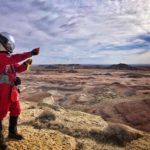
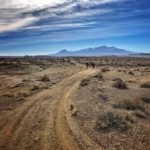
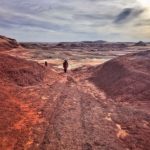
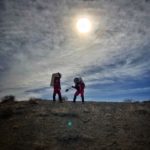
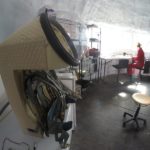
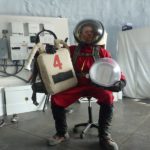
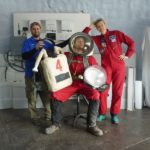
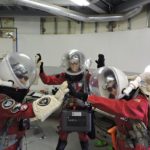
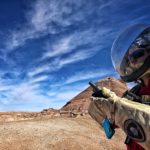

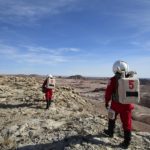
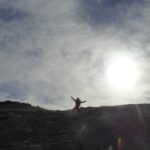
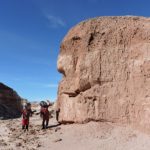
You must be logged in to post a comment.